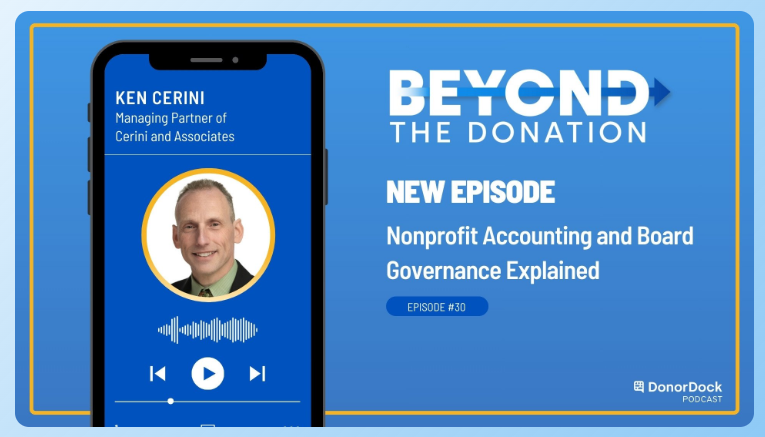The sharing of pay data is more than just a hot trend—it’s becoming more commonplace as the list of jurisdictions considering and enacting laws in this area grows.
Operating simultaneously with these legal mandates are other forces such as employee expectations, market conditions, diversity objectives, and employee relations touchpoints that compel employers to be transparent about pay and benefits.
In this article, we explore the following topics:
- Defining Pay Transparency
- Emerging Legal Requirements
- Going Beyond the Law: The Benefits of Communicating Compensation Information
- Moving Forward with a Pay Transparency Strategy
A working knowledge of the developments in this area is critical not only for legal compliance but for leveraging pay transparency to create a culture that attracts and retains the best talent.
Defining Pay Transparency
What exactly does pay transparency mean:
- Disclosing compensation ranges by function?
- Informing individual employees where they fall within the market? Among colleagues?
- Publishing pay ranges when advertising an open position?
- Explaining how pay ranges are established and what criteria is used?
It can mean all of these things and much more.
The correct answer will vary by organization, but the baseline is always the applicable legal scheme in the locations in which you operate. Going beyond statutory minimums will depend on your organization’s comfort level. How much is shared should be driven by your culture, values, and vision for the type of employer you desire to be.
Both your organization and workforce win when people are provided with as much information as possible. Showcase the value-added benefits your organization offers that make your compensation package competitive and attractive, such as paid time off, flexible work arrangements, professional development, etc. By sharing your total rewards approach, current and prospective employees have the full picture, leaving nothing to the imagination.
Emerging Legal Requirements
Much of the traction gained by the pay transparency movement stems from the number of states and various localities that have enacted legislation governing this topic.
For example, California, New York, and Connecticut all require employers to publicize their pay scales. The list of jurisdictions joining this effort will continue to grow as more legislatures consider enacting pay transparency laws. New Jersey and Massachusetts are among those with bills pending.
On the national level, the federal government has also turned its attention in this direction. Bills are before both the House and Senate which, if enacted, would impact all 50 states.
While the specifics of each piece of legislation differs, they all require employers to inform job applicants of the wage range (also referred to as the minimum and maximum wage) for any open position.
Some variations in how this looks in practice include:
- The timing of providing the information:
- In job postings
- After initial interviews
- Prior to or at the time of making offers
- Upon a candidate’s request
- The nature of applicant that must receive the information:
- Internal versus external
Some laws also address open communication with current employees, requiring employers to inform their existing workforces of the pay scales for their current roles. The timing of such disclosures vary by jurisdiction—at hiring, upon request, when responsibilities change, or to be repeated at set timeframes.
These pieces of legislation are not just recommendations. Many of them have teeth to them, imposing expensive fines for each violation and allowing for plaintiffs to recover damages and attorneys fees. Some also impose recordkeeping and reporting requirements.
In addition to legal penalties, negative publicity generated by lawsuits or agency determinations could tarnish an organization’s reputation. Every nonprofit should consult with legal experts to ensure they understand the requirements that apply.
Organizations with employees in more than one location must not only monitor developments in each area but determine how they will coordinate varying legal schemes. Options include addressing each location individually, setting a baseline process and then establishing supplemental protocols where additional information sharing is required, or establishing a universal program that complies with the most demanding statutory scheme.
As a best practice, it is advisable to avoid multiple policies. View legal requirements as a floor, not a ceiling, and adopt an organization-wide policy committed to pay transparency. Taking a voluntary, global approach across locations instills consistency and trust and reduces confusion, mistakes in application, and employee dissatisfaction.
Going Beyond Legal Requirements: The Benefits of Communicating Pay Information
Regardless of whether there is a legal mandate where your nonprofit operates, engaging in pay transparency is a good business decision. Aside from being ahead of the legal curve, organizations who embrace open compensation communication win on several levels.
These nonprofits engender trust among their workforce and effectively frame their compensation story. When you have a clearly defined compensation strategy, you can ensure that what is said accurately reflects your culture, mission, and values. Also, you are able to manage how it impacts employee relations, from recruitment to engagement, bolstering retention.
Open, honest communication is particularly important in our age of social media and immediate, constant information sharing. People put almost everything out in the open for public consumption, including what they earn. Today’s job applicants and employees, particularly those in younger generations, expect employers to operate similarly and be forthright with them, especially about how and what they are paid.
This approach is important for nonprofit organizations that most often are unable to compete head-to-head with the for-profit sector on pay alone. By being transparent about pay in addition to focusing the conversation on total rewards and other ways you develop and reward your employees, as well as emphasizing the contribution and impact they have on the community they serve, will help distinguish you from other employers.
Impact on Existing Work Environment
When employees understand the basis for their wages, they will not have to speculate about the adequacy of their compensation; they will know if they are receiving fair compensation for their efforts.
Cultivating a culture where employees are empowered with this knowledge improves retention rates. Employees are less likely to seek outside opportunities because they understand the metrics and philosophy behind compensation and rewards. Reduced turnover rates indicate a more engaged, satisfied workforce and translate into a pipeline of high performers that your organization can rely on as part of your succession planning.
To fully benefit from pay transparency policies, employers should engage in open dialogue about pay and benefits, not simply make the information available. The feedback received allows you to assess how your workforce perceives existing compensation programs and addresses concerns. Two-way communication demonstrates that you value your employees and are committed to employee engagement and growth.
Impact on Recruitment
Pay transparency contributes to branding your organization as a desirable place to work and is key to recruiting the best talent for your organization. Disclosing salary and benefit information allows candidates to accurately evaluate your open position and gives them a window into your culture.
Sharing the details of your compensation package early in the process also creates efficiencies. Potential employees will not initiate contact or demonstrate interest in a position if they cannot agree to the proposed salary range. This self-selection process produces a targeted pool of candidates who better fit your needs. No one’s time is wasted, speeding up the hiring process for all involved.
Impact on Diversity, Equity, and Inclusion (DEI) Objectives
Embarking on the path of pay transparency is an opportunity for an organization to review its compensation philosophy, make comparisons to the market, and determine if their practices are aligned with their goals. These exercises provide a wealth of information and opportunities to uncover inequities in existing programs.
For example, the wage gap—consistently paying certain groups less than other groups—is still a very real problem for women, people of color, and particularly women of color. Employers focused on building diverse and inclusive work environments must bring any disparities to the surface and need to be able to respond to questions and justify compensation practices between individuals and among groups if they wish to attract and retain employees from a wide array of backgrounds.
As you prepare to disclose pay data and identify irregularities, you must take the time to make the necessary adjustments, revise pay scales, and introduce new protocols to ensure pay equity continues going forward. Incorporating the redress of wage gaps and any other inequities into your pay transparency strategy will move you closer to reaching your DEI goals.
Moving Forward with a Pay Transparency Strategy
While implementing pay transparency practices requires analysis and planning, its influence on the employer-employee relationship is paramount. Employers must be thoughtful about what they disclose and how.
Yet many organizations do not have the expertise or resources to carefully craft an effective pay transparency strategy. Turning to outside HR consultants can help you understand and navigate the legal and cultural impact that being open and candid about your pay data and philosophy will provide.
Susan Kreeger, Founder & CEO
RealHR Solutions
As a founder of RealHR Solutions, Susan’s commitment to our clients begins with her career-long mission to blend legal and regulatory rigor with common sense and fairness in real workplace settings. With experience practicing employment law as well as leading human resources departments, Susan has held roles in the non-profit, government and corporate sectors. Prior to founding RealHR Solutions, Susan was the Director of Human Resources at the Medical and Health Research Association of New York City, now named Public Health Solutions, and served in legal and Human Resources leadership roles at the New York Clearing House Association. She began her legal career at the New York City Commission on Human Rights. Susan holds a B.A. in History from Georgetown University and a J.D. degree from the Georgetown University Law Center in Washington D.C. Susan is a member of the NYS Bar Association and Georgetown’s Women’s Law Forum.








